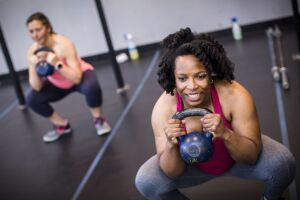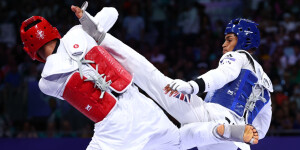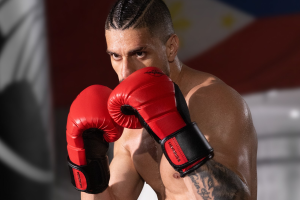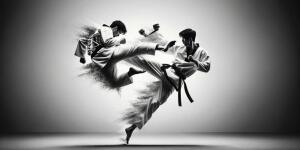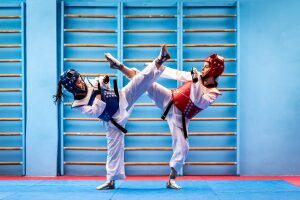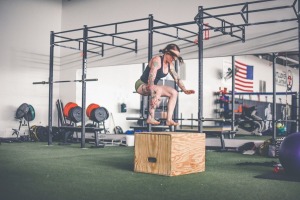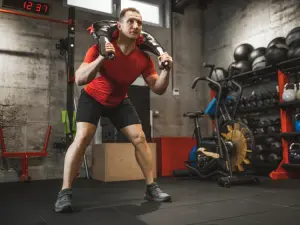In the world of taekwondo, proper practice equipment plays a vital role in shaping the journey of practitioners, from beginners to seasoned athletes. Beyond just aiding in technique refinement, the right gear ensures safety, promotes effective training, and contributes to overall skill development.
Before embarking on the journey of purchasing taekwondo practice equipment, it’s paramount to understand the critical factors that underpin a successful selection process. These factors encompass various aspects, from safety considerations to durability and quality standards, all aimed at optimizing your training experience and progression in the discipline.
Safety Features



Safety stands as a cornerstone in taekwondo training, as it not only safeguards practitioners from potential injuries but also fosters an environment conducive to learning and growth. Prioritizing safety features in your equipment selection involves assessing padding thickness, strap security, and closure reliability to minimize the risk of accidents during training sessions.
Delving deeper, considerations for safety features extend across all facets of taekwondo practice gear, encompassing headgear, body protectors, shin guards, and gloves. Each piece should be meticulously designed to provide adequate protection without compromising on comfort or hindering mobility, ensuring a safe and productive training environment.
Durability and Quality
The significance of durability in taekwondo equipment cannot be overstated, especially considering the rigorous demands of training and sparring sessions. Opting for gear crafted from high-quality materials and boasting superior construction ensures longevity and reliability, allowing practitioners to train with confidence and focus on honing their skills.
Assessing the durability and quality of taekwondo gear involves a comprehensive evaluation of various factors, including material strength, stitching techniques, and overall craftsmanship. By prioritizing reputable brands known for their commitment to excellence in product development, practitioners can make informed decisions and invest in gear that withstands the test of time, supporting their journey in taekwondo for years to come.
Size and Fit
Proper sizing is fundamental for effective taekwondo training, as it directly impacts performance and safety. Ill-fitting equipment can impede movement, cause discomfort, and even lead to injuries. Uniforms, gloves, and protective gear must be tailored to each practitioner’s body dimensions to ensure optimal functionality and protection.
Achieving the right fit involves careful consideration of various factors. For uniforms, measurements should be taken accurately to determine the appropriate size based on height, weight, and body proportions. Uniforms should allow for freedom of movement without excess fabric that can impede kicks or become a hindrance during training. Select gloves and protective gear based on hand size, foot size, and body proportions to ensure a snug fit that provides adequate coverage and protection while allowing for full range of motion.
Brand Reputation and Reviews
Brand reputation plays a crucial role in assessing the quality and reliability of taekwondo equipment. Practitioners and coaches often prefer established brands with a strong reputation for their commitment to excellence in product design, performance, and durability. Reputable brands invest in research, development, and quality control processes to deliver gear that meets the rigorous demands of taekwondo training and competition.
Additionally, practitioners can benefit from reading reviews and testimonials from other athletes and users. Reviews provide firsthand insights into equipment performance, durability, comfort, and overall satisfaction. By considering feedback from fellow practitioners and trusted sources, individuals can make informed decisions and select gear that best suits their needs and preferences.
Versatility and Adaptability
Taekwondo training encompasses a diverse range of activities, including sparring, forms practice, drills, and conditioning exercises. Versatile equipment that can adapt to various training needs enhances the effectiveness and efficiency of training sessions, allowing practitioners to target specific skills and objectives.
When selecting equipment, practitioners should prioritize versatility and adaptability. Multipurpose training bags, adjustable targets, and modular training kits offer flexibility in training routines, enabling practitioners to customize workouts based on skill level, training goals, and personal preferences. Versatile equipment promotes skill development, agility, speed, power, and overall proficiency in taekwondo, contributing to continuous improvement and success in the discipline.
Budget Considerations
Establishing a budget is a crucial step when purchasing taekwondo practice equipment. Practitioners should carefully evaluate their financial resources and determine a realistic budget that aligns with their training goals and needs. By setting a budget upfront, individuals can avoid overspending and ensure that they invest in essential equipment without compromising their financial stability.
Balancing cost with quality and functionality is essential when selecting taekwondo practice equipment. While it may be tempting to opt for the cheapest options available, practitioners should prioritize quality and functionality to ensure that their gear meets their training requirements and withstands the rigors of taekwondo training. By carefully evaluating the features, materials, and reputation of different products, practitioners can make informed decisions that offer the best value for their budget.
Specialized Equipment for Advanced Training
Specialized equipment plays a crucial role in advancing the skills and techniques of taekwondo practitioners at the advanced level. These tools specifically target key aspects of training, such as precision, power, speed, and agility. Common examples of specialized equipment include kicking targets, breaking boards, agility ladders, and resistance bands.
When investing in specialized gear, practitioners should consider several factors to ensure that they select the most suitable options for their training needs. Factors to consider include the quality and durability of the equipment, its compatibility with existing training routines, and its potential to facilitate skill development and progression. Additionally, practitioners should seek guidance from coaches and experienced athletes to identify the most effective specialized equipment for their specific goals and training objectives.
In conclusion, selecting the right taekwondo practice equipment is essential for optimizing training sessions and ensuring progress in the discipline. From safety considerations to budget constraints, practitioners must carefully weigh various factors to make informed decisions. Trusted brands like Poweraptor offer a wide range of high-quality gear designed to meet the diverse needs of taekwondo practitioners, providing durability, functionality, and performance to support their training journey.
With Poweraptor’s reputation for excellence and dedication to innovation, practitioners can trust that they are investing in gear that will enhance their training experience and help them achieve their goals. By choosing Poweraptor, practitioners can train with confidence, knowing that they have the support of a brand committed to their success in the world of taekwondo.


